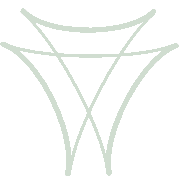Aerospace Control Systems is a leader in research, development, and practical application of Kalman filtering for high-performance attitude determination and attitude sensor alignment and calibration. I have experience with high-performance (sub-arcsecond and sub-microradian) attitude estimation for commercial imaging spacecraft, and also for science spacecraft. Such performance is not easy to achieve in a static or dynamic environment, and it requires a thorough understanding of attitude sensor performance, attitude estimation, thermal effects, mechanical effects, timing and latency, and operating conditions.
Experience
I have an intimate understanding of principles of operation and performance characteristics of star trackers and gyros. This knowledge proved invaluable on several spacecraft projects. In one case, I brought mission-critical timing issues to a customer's attention. In another case, I analyzed in-flight data to reveal a time tag problem that resulted from a software error associated with a variable frame rate in a star tracker. In the same system, I identified a significant error in the calculation of the measurement quaternion, which I traced to inadequate testing, documentation, and version control. Both of these were in-flight anomalies that the spacecraft manufacturer could not resolve. In another spacecraft I identified an IMU synchronization problem that threatened the missions because it required a hardware fix.
I have significant knowledge of and experience with a variety of attitude hardware, including star trackers and gyros. I have in-depth experience with or knowledge of several star trackers, including the Ball HAST and CT-2020 (and previously the CT-602, and CT-633); the Goodrich GR-1004 (when it existed, and its predecessors, the HD-1003 and HD-1005); and good knowledge of the Leonardo AA-STR. I also have direct, in-depth experience with the Northrop-Grumman Scalable Space Inertial Reference Unit (SSIRU), including the SIRU, SIRU-L, and SIRU-E, which contain four Hemispherical Resonator Gyros (HRG); the LN200S and LN200HP interferometric fiber-optic gyros (IFOG, FOG), the Honeywell GG1320 ring-laser gyro (RLG) and Miniature Inertial Measurement Unit (MIMU), and good knowledge of the Honeywell HP-FOG fiber-optic gyro, and MEMS IMUs, including Quartz MEMS (QMEMS) IMUs.
Performance Issues and Concerns
There are numerous problems that can occur when designers are not fully aware of error characteristics of star trackers and gyros, system issues, and operating environments. Problems occur also when designers do not have an in-depth understanding of and practical experience with Kalman filters and their implementation and operation. Optimistic performance predictions are obtained from simulation results based on low-fidelity sensor models. Problems encountered in simulation, testing, or in flight are often "mitigated" or "resolved" by implementing ad hoc fixes rather than proper design. Problems persist when the same design is reused on other programs. Performance is not the only concern. For example, sufficient downlink telemetry is needed for ground-based payload data processing, performance analysis and monitoring, and anomaly resolution.
The placement, mounting, orientation, and number of star trackers and IMUs are critical to performance, but sometimes are not well considered in designs. Actively redundant IMUs improve performance and enhance fault detection, isolation, and recovery (FDIR), and passively redundant IMUs can improve reliability. Redundant IMUs are not fully used to advantage in many systems where performance and reliability are critical.
There are too many such issues to discuss here, but problems found in some designs are surprisingly simple or obvious, and others are subtle, complex, or involve other subsystems. Problems can be avoided and improvements can be made through independent review and assistance by an experienced outside engineer. I can assist in your engineers or provide independent review and independent verification and validation to identify deficiencies and make improvements in your attitude determination systems.
High-Fidelity Attitude Sensor Models
I have developed detailed models to simulate star trackers and gyros, which provide a high level of fidelity of measurement errors and sensor characteristics. These models are not specific to a particular device, but are general enough to apply to most star trackers and gyros. The level of fidelity also depends on knowledge of model parameters. Parameters can be obtained from the sensor manufacturers' specifications, error budgets, acceptance test data, and possibly from in-flight telemetry from previous missions. Parameters can also be varied according to distributions and temperature-varying profiles, which supports Monte Carlo simulation.
Attitude Sensor Alignment and Calibration
The RADICAL Redundant IMU (RIMU) Attitude Determination and Calibration filter is an attitude determination and calibration Kalman filter that takes full advantage of the redundancy in a RIMU to optimally estimate spacecraft attitude and a full set of calibration parameters. The RADICAL filter is designed for real-time operation, automated and semi-automated ground-based processing, and desktop design and analysis. It employs the most advanced algorithms available to fully calibrate IMUs with three or more sense axes, and it estimates three-axis relative alignments (interlocks) between star trackers and gyro sense axes.
The RADICAL filter software is fully featured for real-time in-flight processing and for ground data processing. The RADICAL filter has been used in ground-based processing to calibrate attitude sensors and gyros and to trend calibration parameters, it has been used as a diagnostic tool for anomaly resolution, and it has been used as a benchmark to evaluate the performance of other attitude determination filters. The RADICAL filter can deliver enhanced attitude determination performance for star trackers that output star centroid measurements instead of the usual quaternion "measurement". It can also process star centroid measurements from an optical payload, if available, which aligns the payload frame to the attitude determination frame.
Contact ACS to obtain assistance in designing a reliable and high-performance attitude determination system.
Other Attitude Determination Sensor Configurations
In addition to high-performance attitude estimation, ACS can provide attitude determination filters for other sensor configurations such as horizon sensors, sun sensors, magnetometers, GPS-based attitude, and 3-axis gyro, as well as solutions for two or one gyro, or no gyros.
Copyright © 2021 by Mark E. Pittelkau and Aerospace Control Systems, LLC
